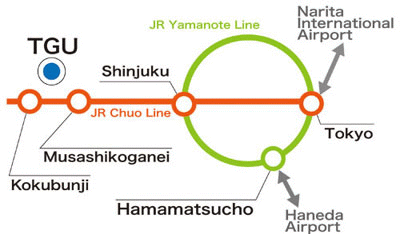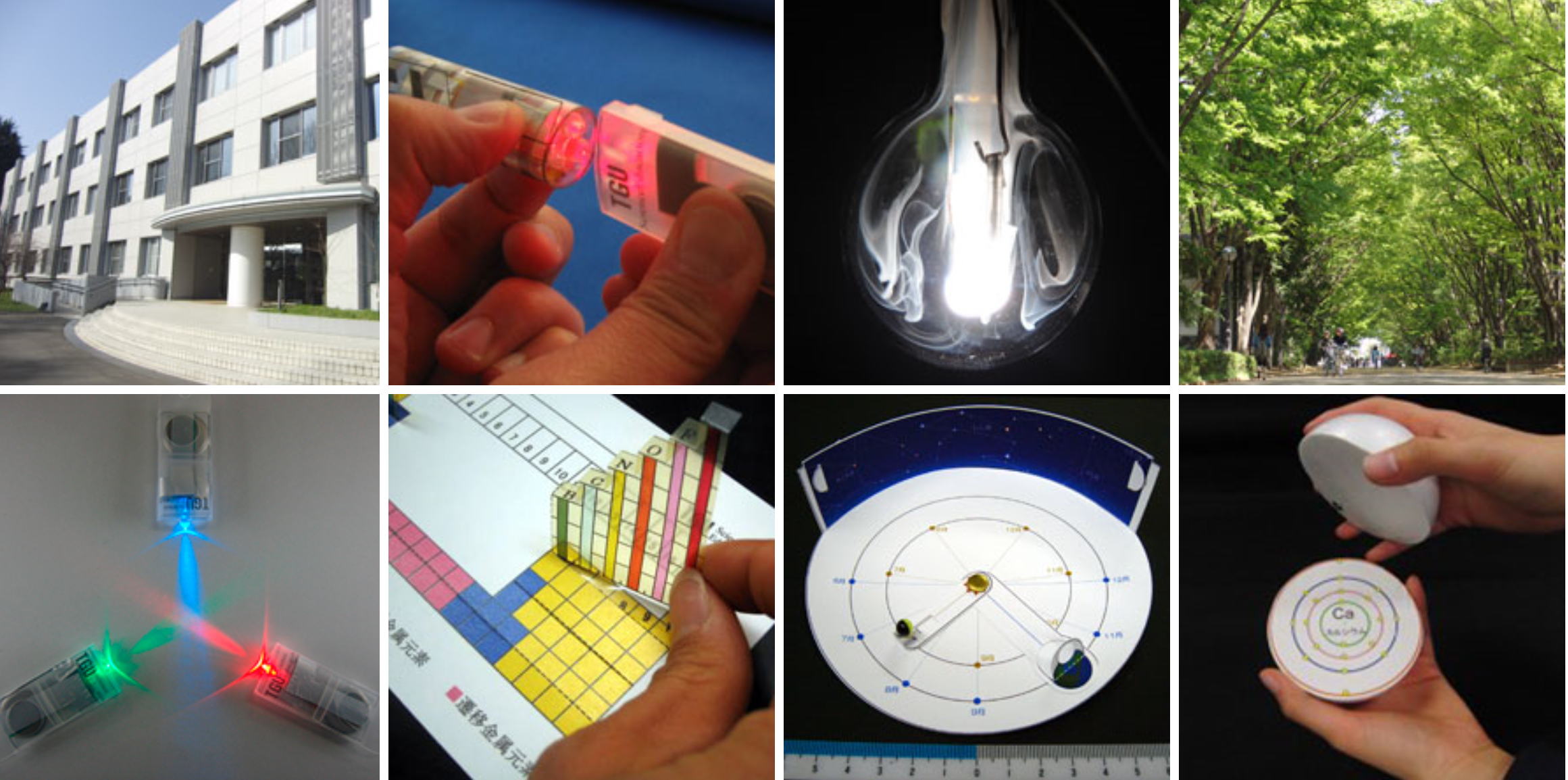What is Kamata Laboratory?
Note: The following sentences were written in simple English for machine translation.
Please make use of "Google Translate"
Overview(creating new teaching materials)
Among the teaching materials that have been used for many years,
there are many excellent teaching materials.
But some of them may be too far from students' everyday lives.
In Kamata laboratory, we keep developing new teaching materials.
We want to realize new science classes using the new teaching materials.
In Kamata Lab, students design and make something new.
In addition, students use and assess their new teaching materials in real
classes.
If you are interested in designing and making new teaching materials,
and if you want to be a teacher in future,
Kamata Lab is suited to you.
What is your research theme?
When you teach science at school, you need good teaching skills and good
teaching materials.
Even if you have good teaching materials, if you do not have good teaching
skill,
you cannot teach science so well.
Even if you have good teaching skills, if you do not have good teaching
materials,
you cannot teach science so well.
In science classes at school, there are many kinds of teaching materials:
For example,
(teaching materials for students' experiment),
(teaching materials for science craft)
(the video images as teaching materials ).
In Kamata Lab, we focus on the teaching materials for primary/secondary
school students (especially in the field of Physics and Chemistry).
We have also studied how to use them in real classes.
Why do we need new teaching materials?
As mentioned above, some old teaching materials are too far from students'
daily lives.
For example...
Students cannot find analogue meters such as ammeter/voltmeter, anywhere
other than science classroom.
In addition, most devices in our daily lives are black box (Almost all
devices are made of electronic chips.), and students cannot understand
the mechanism of the devices.
Therefore, students cannot understand how science is used in their daily
lives.
In order to improve the situation, new teaching materials that can relate
school science to students' daily lives are strongly needed.
Members
PROFESSOR :
Dr. Masahiro Kamata
Number of MASTER COURSE STUDENTS :
M2 : 2
M1 : 3
Number of UNDERGRADUATE STUDENTS :
B4 : 4
B3 : 6
Number of FOREIGN STUDENTS : 2
After finising the study in Kamata Lab.
Many students become school teachers (elementary and secondary school).
However, there are some who chose to work for companies related to education.
Who is Prof.Kamata?
Name:Masahiro Kamata
Title:Department of Science Education, Tokyo Gakugei University
4-1-1, Nukuikita-machi, Koganei-shi, Tokyo 184-8501, Japan
Tel/Fax :+ 81-42-329-7542
E-mail:masahirok@nifty.com
Year of Birth: 1959
Education History:
1983 Graduated from the Faculty of Engineering, Kyoto University.
1988 Graduated from the Graduate School of Engineering, Kyoto University
(Doctor’s Program)
1988 Doctor of Engineering, Kyoto University.
Title of Dissertation: Engineering Considerations on Thermoelectric Power in Electrochemical
Systems
Professional History:
1988 - 1991 Research associate, Kyoto University
(Department of Chemical Engineering, Faculty of Engineering)
1991 - 1996 Associate professor, Tottori University,
(Department of Materials Science, Faculty of Engineering)
1996 – 2007 Associate professor, Tokyo Gakugei University,
(Department of Science Education, Faculty of Education)
2007 - 2011 Professor, Tokyo Gakugei University,
(Department of Science Education, Faculty of Education)
2011-Present Professor, Tokyo Gakugei University,
(The United Graduate School of Education)
Research Interest:
Chemistry education, Radiation education, Science education for primary
and secondary school, Electrochemistry in molten salt and solid ionic systems.
Professional Membership:
Japan Society for Science Education
Society of Japan Science Teaching
The Chemical Society of Japan
The Physics Education Society of Japan
Japan Society of Earth Science Education
Radiation Education Forum
The Electrochemical Society of Japan
Atomic Energy Society of Japan
The Society of Biological Science Education of Japan
International Social Activities:
1998 April-June
A short-term expert of JICA for “Science and Mathematics education in
primary and secondary school in South Africa”
2001 September
A short-term expert of JICA for “DEVELOPMENT OF SCIENCE AND MATHEMATICS
TEACHING FOR PRIMARY AND SECONDARY EDUCATION IN INDONESIA”
2002 September
A short-term expert of JICA for “DEVELOPMENT OF SCIENCE AND MATHEMATICS
TEACHING FOR PRIMARY AND SECONDARY EDUCATIONIN INDONESIA”
2006 January -2011 December
International Union of Pure and Applied Chemistry (IUPAC)
National Representative of Committee on Chemistry Education (CCE)
2012 January – present
Titular member of Committee on Chemistry Education (CCE)
2006 April - 2013
An expert for JICA project “Teaching Method Improvement towards Children’s
Development in Mongolia
Research Products
Please click the titles to move to the detail explanation. When you come back here, please use the back button of your browser.
Ene-Pick
ROV(Revolution of Venus)
Si-Po (Model of the heart)
Mini-Light
Zinc-air battery
Radiation education (K40 in food)
Radiation education (mineral spring)
PikiPoko(Ammeter that indicates electric current by the movement of light
spot)
AC waveform indicator that uses afterimage
3D periodic table
Circuit board made of thick paper and Al tape
Cloud that does not require dry ice
Hand-drawn resistors
Microscale electrolysis using coin-type batteries.
Model of electric circuits
3D atomic model
Combustion of diamond
Name plate by electro etching
Model of stratum forming
Kamata Lab's Character
ACCESS
How to come to Tokyo Gakugei Univ.

Department of Science Education, Tokyo Gakugei University
4-1-1, Nukuikita-machi, Koganei-shi, Tokyo 184-8501 JAPAN
